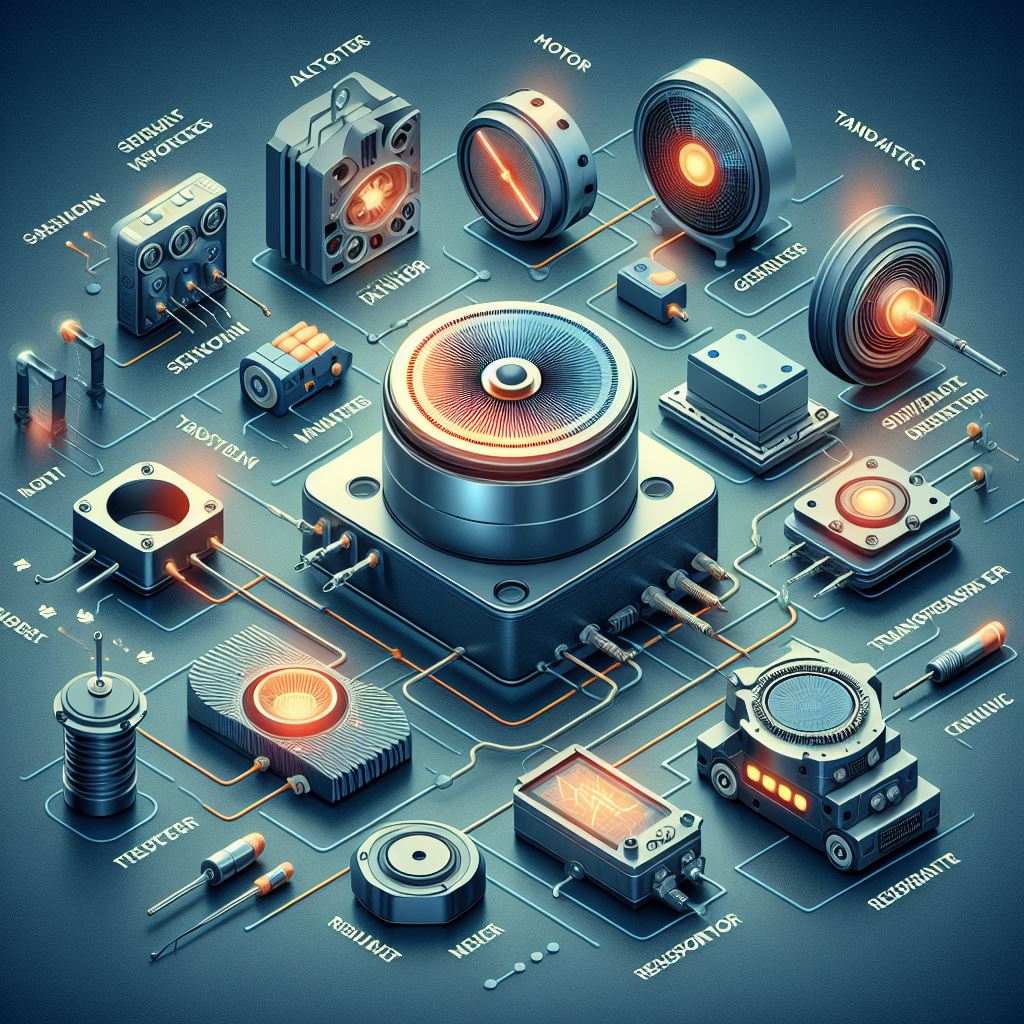The global piezoelectric devices market has emerged as a cornerstone of innovation across diverse industries, particularly in electronics and automotive applications. Piezoelectric devices, which generate an electric charge in response to mechanical stress, are revolutionizing how energy is harvested, sensors are deployed, and precision is achieved in advanced systems. As industries shift toward more sustainable, efficient, and intelligent technologies, the role of piezoelectric devices is expanding rapidly, fueling significant growth in the market.
With rising demand for smart devices, advancements in miniaturization, and integration with Internet of Things (IoT) systems, piezoelectric devices are at the forefront of next-generation industrial and consumer electronics. Furthermore, the automotive sector is witnessing substantial adoption of piezoelectric technologies in applications ranging from fuel injection systems to active vibration control, showcasing their versatility and strategic importance.
Growing Demand Across Electronics Sector
The electronics industry continues to be the largest contributor to the piezoelectric devices market. Piezoelectric materials are widely utilized in the manufacture of sensors, actuators, buzzers, ultrasonic transducers, and microelectromechanical systems (MEMS). These devices are critical for applications in smartphones, laptops, printers, cameras, medical devices, and industrial automation.
The demand for miniaturized and energy-efficient components in consumer electronics has led to significant investments in piezoelectric technologies. Moreover, with the increasing proliferation of smart wearable devices and IoT-connected systems, piezoelectric sensors are becoming indispensable. They facilitate precise data collection, provide real-time feedback, and enable innovative features in smart gadgets, driving strong market growth in the electronics segment.
Automotive Industry Embracing Piezoelectric Technologies
In the automotive industry, piezoelectric devices are playing a crucial role in enhancing vehicle performance, safety, and efficiency. Automotive manufacturers are integrating piezoelectric actuators into engine management systems, such as advanced fuel injectors, for better fuel economy and reduced emissions. Additionally, piezoelectric sensors are used in tire pressure monitoring, knock sensors, and parking assist systems, among others.
One of the most notable uses of piezoelectric devices in automobiles is in active vibration control systems. By actively dampening vibrations, piezoelectric actuators help improve ride comfort, reduce cabin noise, and increase vehicle lifespan. As electric and hybrid vehicles continue to gain traction globally, the demand for lightweight, energy-efficient, and durable piezoelectric components in vehicle manufacturing is expected to surge.
Download PDF Brochure @ https://www.marketsandmarkets.com/pdfdownloadNew.asp?id=256019882

Innovations in Medical Devices and Healthcare Applications
Beyond electronics and automotive, the medical sector represents a promising frontier for piezoelectric devices. Ultrasonic imaging transducers, dental scalers, and surgical tools increasingly incorporate piezoelectric technology to enhance precision and performance. The ability of piezoelectric devices to convert mechanical energy into electrical signals makes them ideal for non-invasive diagnostic tools and therapeutic equipment.
The integration of piezoelectric elements into wearable medical devices and implantable health monitors is another emerging trend, supporting continuous patient monitoring and remote diagnostics. With the growing emphasis on personalized healthcare and remote treatment, piezoelectric-driven solutions are gaining significant relevance in the healthcare industry.
Renewable Energy and Industrial Automation Driving Adoption
Another growth driver for the piezoelectric devices market is their role in renewable energy generation and industrial automation. Piezoelectric energy harvesting, often referred to as vibration energy harvesting, enables the conversion of mechanical vibrations into usable electrical energy. This technology finds applications in powering wireless sensor networks, smart grids, and low-power electronic devices in remote or hard-to-reach environments.
Industries like aerospace, defense, and heavy machinery manufacturing are increasingly deploying piezoelectric actuators and sensors to improve operational efficiency, predictive maintenance, and structural health monitoring. As the push for Industry 4.0 intensifies, piezoelectric devices are expected to be at the core of smart factories, providing precise control and real-time data feedback for enhanced productivity.
Market Challenges and Future Outlook
The global piezoelectric devices industry is expected to grow from USD 35.59 billion in 2024 to USD 55.49 billion by 2030 at a CAGR of 7.7% during the estimated period 2024-2030., Despite their numerous advantages, the piezoelectric devices market faces challenges such as high material costs and limitations in the scalability of certain piezoelectric applications. Lead zirconate titanate (PZT), the most commonly used piezoelectric material, raises environmental concerns due to its lead content. However, ongoing research in lead-free piezoelectric materials, such as barium titanate and potassium sodium niobate, is offering promising alternatives.
Looking ahead, the future of the piezoelectric devices market is optimistic. Continuous advancements in nanotechnology, materials science, and manufacturing processes are expected to drive down costs, improve device efficiency, and expand application areas. The convergence of piezoelectric technology with artificial intelligence (AI), machine learning, and IoT will likely open new pathways for smart, self-powered, and adaptive electronic systems.
The piezoelectric devices market is poised to play a pivotal role in powering innovation across multiple industries. From revolutionizing electronics and transforming the automotive landscape to enabling breakthroughs in healthcare and renewable energy, piezoelectric devices offer immense potential. As technological advancements continue to shape the future, these devices will remain at the heart of smarter, more efficient, and sustainable solutions globally.
Frequently Asked Questions (FAQ)
1. What are piezoelectric devices?
Piezoelectric devices convert mechanical energy into electrical energy or vice versa using materials that exhibit the piezoelectric effect. They are widely used in sensors, actuators, and energy harvesting applications across various industries.
2. Which industries commonly use piezoelectric devices?
Key industries include electronics, automotive, aerospace, medical devices, industrial automation, and renewable energy. These devices are used in applications like ultrasonic imaging, automotive sensors, vibration control, and IoT devices.
3. Why is the automotive sector adopting piezoelectric technology?
Piezoelectric devices improve fuel efficiency, reduce emissions, and support advanced driver assistance systems (ADAS). They are also critical for active vibration control and noise reduction in vehicles, particularly electric and hybrid models.
4. What are some major trends shaping the piezoelectric devices market?
Major trends include miniaturization for use in IoT, the shift toward lead-free piezoelectric materials for environmental compliance, and the integration of piezoelectric sensors with AI and machine learning for predictive analytics.
Know more related Reports : https://www.marketsandmarkets.com/semiconductorand-electonics-market-research-87.html
